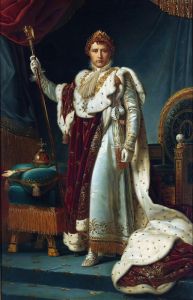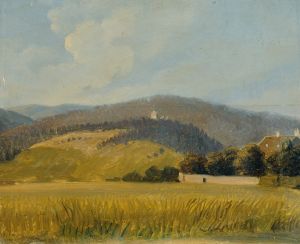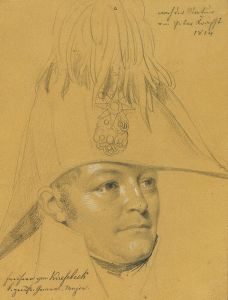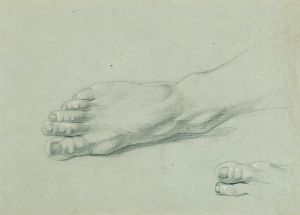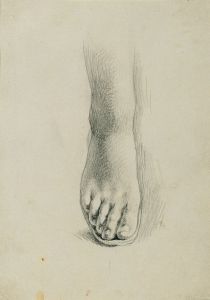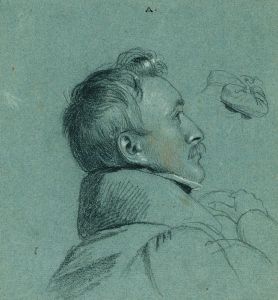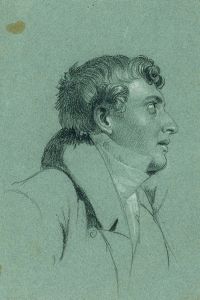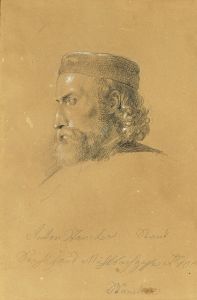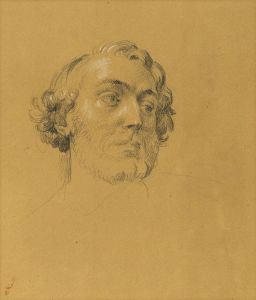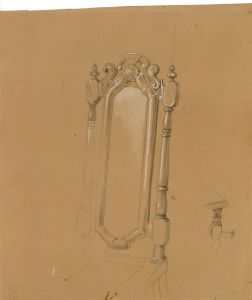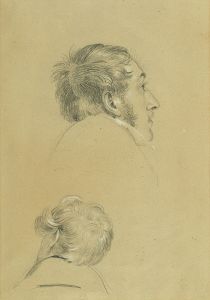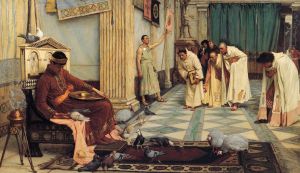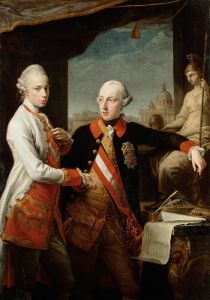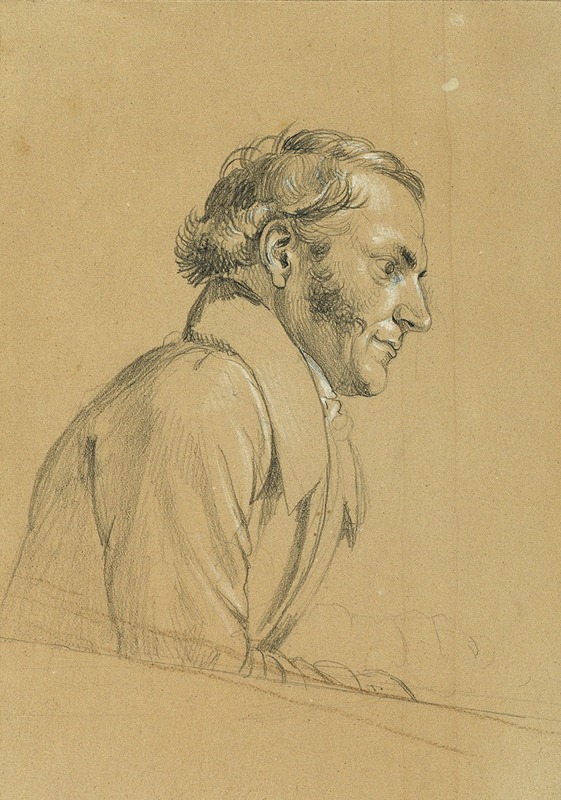
Männliche Studie zu ‘Rückkehr des Kaisers Franz aus Pressburg’
A hand-painted replica of Johann Peter Krafft’s masterpiece Männliche Studie zu ‘Rückkehr des Kaisers Franz aus Pressburg’, meticulously crafted by professional artists to capture the true essence of the original. Each piece is created with museum-quality canvas and rare mineral pigments, carefully painted by experienced artists with delicate brushstrokes and rich, layered colors to perfectly recreate the texture of the original artwork. Unlike machine-printed reproductions, this hand-painted version brings the painting to life, infused with the artist’s emotions and skill in every stroke. Whether for personal collection or home decoration, it instantly elevates the artistic atmosphere of any space.
Johann Peter Krafft was an Austrian painter known for his historical and genre scenes, particularly those that captured significant moments in Austrian history. One of his notable works is "Männliche Studie zu ‘Rückkehr des Kaisers Franz aus Pressburg’," which translates to "Male Study for ‘The Return of Emperor Franz from Pressburg’." This painting is a preparatory study for a larger composition that Krafft intended to create, which would depict the triumphant return of Emperor Franz I of Austria from Pressburg (now Bratislava, Slovakia).
The historical context of this painting is rooted in the Napoleonic Wars, a series of conflicts involving Napoleon Bonaparte's French Empire and various European coalitions. The Treaty of Pressburg was signed on December 26, 1805, following the Battle of Austerlitz, one of Napoleon's most significant victories. This treaty marked a significant reorganization of territories in Europe and had profound implications for the Austrian Empire. The return of Emperor Franz I from Pressburg symbolized a moment of political significance and national pride for Austria, despite the unfavorable terms of the treaty.
Krafft's study focuses on the male figures that would have been part of the larger scene, capturing the essence of the period's military attire and the solemnity of the occasion. His attention to detail in the uniforms and expressions of the figures reflects his commitment to historical accuracy and his skill in rendering human emotion and character. This study would have served as a foundational piece for Krafft to explore composition, lighting, and the arrangement of figures in the final work.
Johann Peter Krafft was born on September 15, 1780, in Hanau, Germany, and later moved to Vienna, where he became an influential figure in the Austrian art scene. He studied at the Academy of Fine Arts in Vienna and further honed his skills in Paris under the tutelage of Jacques-Louis David, a leading figure in the Neoclassical movement. Krafft's work is characterized by its clarity, precision, and the ability to convey narrative through visual means.
While the final composition of "The Return of Emperor Franz from Pressburg" may not be as widely recognized as some of Krafft's other works, such as "The Battle of Leipzig" or "The Entry of Emperor Franz I into Vienna," the study remains an important piece that showcases Krafft's process and his dedication to capturing historical events with authenticity and artistic integrity.
Krafft's contributions to art extend beyond his paintings; he also played a significant role in the development of art institutions in Austria. He served as the director of the Belvedere Gallery in Vienna and was a professor at the Academy of Fine Arts, influencing a generation of artists with his teachings and works.
In summary, "Männliche Studie zu ‘Rückkehr des Kaisers Franz aus Pressburg’" is a testament to Johann Peter Krafft's skill as a historical painter and his ability to encapsulate the spirit of an era through his art. His works continue to be appreciated for their historical significance and artistic merit, offering insights into the cultural and political landscape of early 19th-century Austria.





